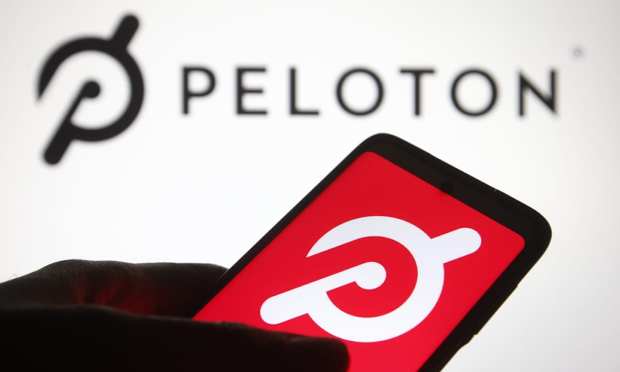Peloton’s Deals Deluge Shows Its Aspirations To Be Digital Front Door

It may seem strange to conceive of a global health pandemic as having “winners,” since, by its very nature, it seems everyone automatically loses. Nonetheless, if we were to put together a COVID-19 winners’ circle, it would certainly include the fitness giant Peloton, as the firm’s connected smart bikes became must-have fitness items in the wake of gyms nationwide closing down about a year ago (and consumer shying away from them for health and safety reason ever since).
In fact, Peloton’s biggest and most consistent problem for the last year or so has been keeping up with spiking demand.
“As we rapidly scale our organization to meet the extraordinary demand for our products, we realize that some of our members have faced extended delays associated with receiving our products or having support requests fulfilled,” Peloton CEO John Foley noted in a letter to shareholders last fall. And those delivery delays were not a transitory problem: As of early 2021, Peloton was still reporting delivery delays of three months or more.
“We’re finding that Peloton the idea has grown faster than Peloton the company. All companies need to figure out how to grow into their hype,” BMO Capital Markets Analyst Simeon Siegel reportedly told The New York Times earlier this year.
Per reports this week, Peloton’s aggressive round of new acquisitions reveal a firm working overtime to grow up and into its hype, beyond its role as a connected device-maker and into a new position as the “digital front door” to a connected commerce ecosystem powered by payments.
The New Pieces Of The Connected Peloton Ecosystem
The three latest addition to the Peloton pile are three acquired firms: Aiqudo Inc, purchased in February of this year; and Atlas Wearables Inc. and Otari, both purchased toward the end of 2020.
Aiqudo pushes Peloton into the world of voice, with an artificial intelligence (AI)-powered digital voice assistant that lets developers add voice actions to apps and devices. Atlas Wearables is a wearable play — it makes fitness-oriented smartwatches that guide users through workouts and gauges their performance. Finally, Otari offers consumers an interactive workout mat with its own screen.
Taken collectively, the new additions enable Peloton to expand both its hardware and services offerings, building off its existing software platform, bikes and treadmills. The addition of wearables allows the platform to expand into personally curated workouts for additional users.
The buy-in, from an expenditure position, does not appear to be massive. According to Bloomberg’s reporting, Peleton paid $78.1 million in cash for three companies during the final quarter of 2020. Those deals would not include the more recent purchase of Aiqudo, and instead would reflect the purchase of Otari, Atlas and the intellectual property firm Peerfit, a digital health company Peloton bought in December.
Peloton is clearly bulking up its offerings. But while the acquisitions might expand its range of devices and workout equipment, they also dovetail with the firm’s ongoing efforts to create a connected commerce hub within its platform.
The Coming Connected Commerce Peleton Ecosystem
Peloton has been busy of late: Last week, the firm announced a team-up with athletic apparel manufacturer Adidas to develop a new line of sports apparel and lifestyle gear that will hit shelves (digital and physical) this week. The Adidas x Peloton SS21 collection of performance wear and lifestyle apparel — which was created by Peloton instructors Ally Love, Robin Arzón and Cody Rigsby — represents the firm’s first instructor-designed, global-level collaboration.
“There was so much that went into this collection! You can see each of our personalities shine through. This community is an inspiration to us, and we made this so that anyone can feel confident and empowered every time they wear one of these pieces,” said Arzón.
The launch of the apparel line coincides with the release of a new series of on-demand classes, available now on the Peloton Bike, Bike+ and the Peloton app.
“My inspiration for the Adidas x Peloton collection was rooted in self-love and inspiring others to do the same. This is a versatile collection that encourages our members to work out how they want to, when they want to,” said Rigsby.
And what Peleton wants, of course, is for customers to work out with them, monitor their workouts with them, and even dress to work out with them. It seems the goal is to build an ever-expanding menu of value-added services all from within the comfort of the Peloton ecosystem, accessible in as many ways as consumers want.
Will it work? As always, that’s a difficult question to answer. But Peloton has the numbers in terms of users: As of last year, the firm passed the one million mark for connected consumers. And it clearly has the interest: As of the company’s earnings call last month, Peloton posted its first $1 billion quarter.
But can the firm logistically deliver on the promise of the connected ecosystem it’s trying to create? That remains an open question, as consumers who ordered products this month won’t actually be able to log in and start using them until May, when they are expected to actually ship.
The ambition is there — but it seems Peloton still has work to do in terms of getting its delivery and its connected economy to actually sync up.